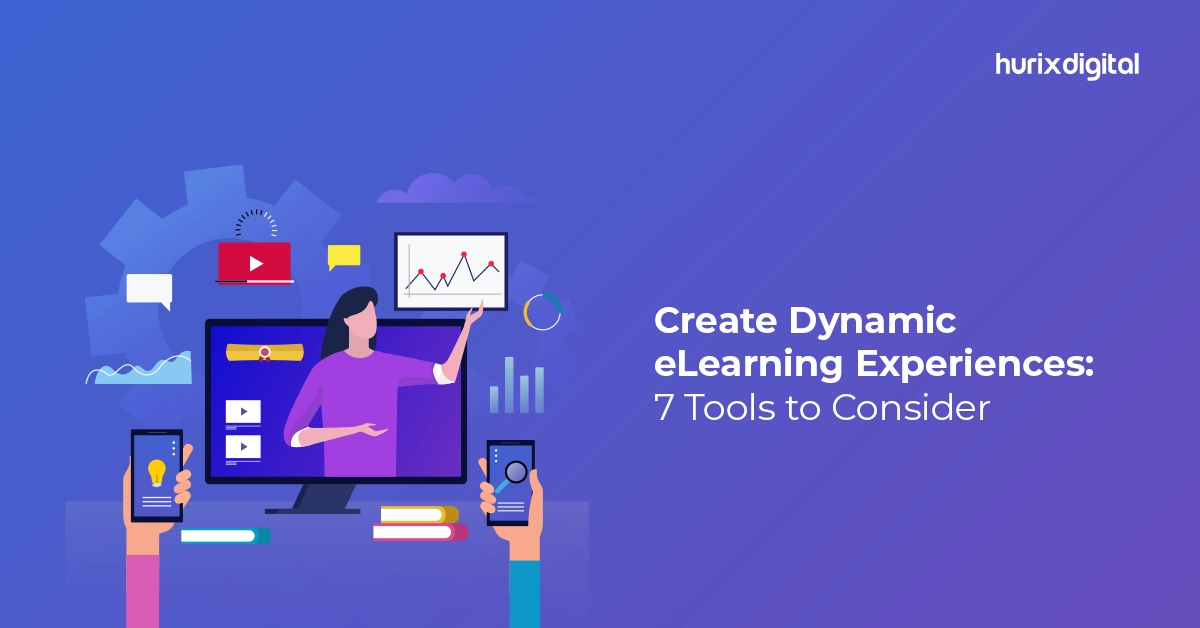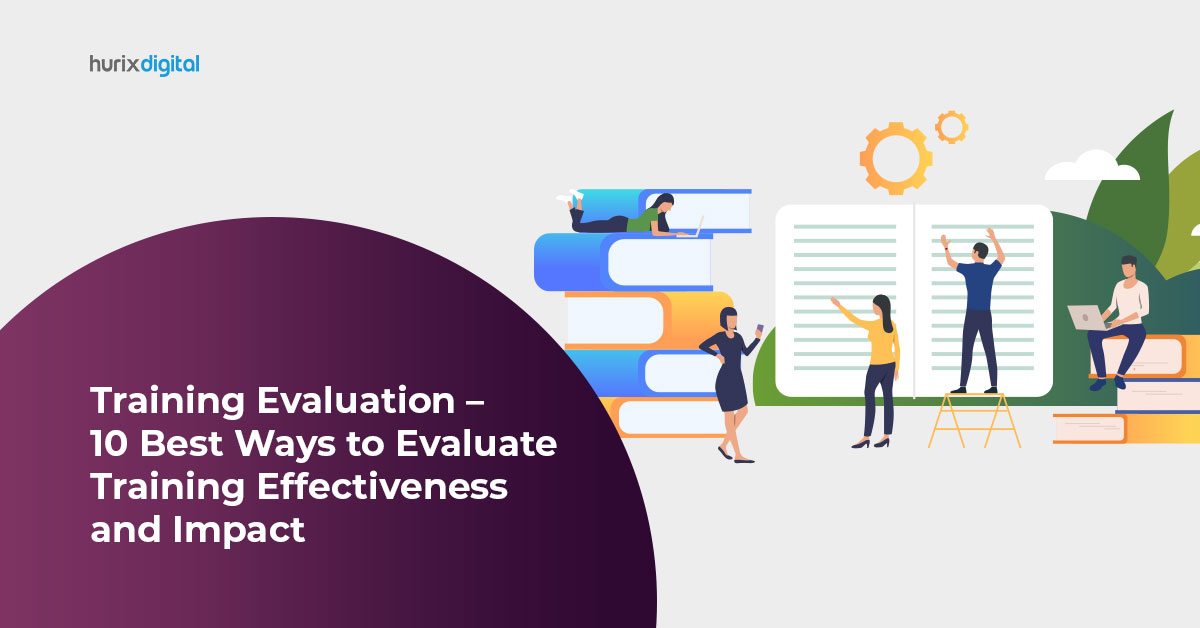
Create Dynamic eLearning Experiences: 7 Tools to Consider
Summary
This article emphasizes the significance of e-learning tools in developing engaging and dynamic online learning experiences. It highlights top-notch tools and additional resources that effectively engage students, providing personalized and interactive eLearning experiences tailored to their needs.
Over the past few, online learning has gained a lot of prevalence, ushering in a new era of education and training. However, when it comes to creating a flexible, convenient, and personalized eLearning experience, choosing the right eLearning tools can make a considerable difference.
These tools help you engage students, make your online educational content more interactive, and deliver impactful learning experiences. From preparing multimedia content to handling online classrooms, the must-have tools for eLearning cover a wide range of functions.
Also, with these tools by your side, you can design and deliver eLearning experiences that are informative and effective, catering to the various needs of students. This blog post will give you a detailed overview of the eLearning tools you need to succeed in today’s digital learning landscape.
Table of Contents:
- Significance of Tools for Creating Dynamic eLearning Experiences
- Top Must-Have Tools for Creating Dynamic eLearning Experiences
- Final Thoughts
Significance of Tools for Creating Dynamic eLearning Experiences
The significance of tools for creating dynamic eLearning experiences cannot be overstated. These tools allow educators to create interesting, interactive, and personalized learning experiences that cater to diverse learner requirements. From learning management systems (LMS) to multimedia content creation software, these tools allow educators to deliver personalized and impactful learning experiences to students across the globe.
Now, you might be wondering how these tools can help educators. Well, there are many reasons to use these tools! One key reason tools are essential for building dynamic eLearning experiences is their ability to improve learner engagement. Standard, text-based learning materials usually need help to capture and hold students’ attention.
Therefore, by taking advantage of multimedia elements such as animations, videos, interactive simulations, and gamified activities, educators can transform standard educational practices and unleash the maximum potential of digital learning environments.
Also Read: 9 Reasons Your Organization Needs Custom eLearning, Not Off-the-Shelf Courses
Top Must-Have Tools for Creating Dynamic eLearning Experiences
Here are the top seven eLearning tools for creating dynamic learning experiences.
1. Learning Management Systems (LMS)
According to research, the global learning management system market size was valued at USD 22.1 billion in 2023 and is expected to reach USD 82 billion by 2032, with a CAGR of 17% during the forecast period (2020-2027). Hence, it might not be wrong to say that a learning management system (LMS) is the backbone of any eLearning program.
These learning management systems ensure excellent preparation and management of educational content, track learners’ progress, and handle performance assessments. Besides, you might be surprised to know that modern LMS platforms come with different features, including multimedia support, course authoring tools, discussion forums, and analytics dashboards.
In addition, these learning management tools allow you to create interactive courses using different multimedia elements like videos, quizzes, or assignments.
2. Content Authoring Tools
Content authoring tools are essential for creating engaging and interactive eLearning content. These tools allow you to design and develop multimedia-rich courses without the need for programming knowledge.
Also, according to a survey, approximately 59% of the eLearning market share comes from online content and authoring tools. These tools allow you to create interactive presentations, simulations, quizzes, and assessments. They offer intuitive interfaces, drag-and-drop functionality, and a wide range of templates and assets to streamline the course development process.
3. Video Editing Software
Video content usually plays a powerful role in delivering eLearning content as it helps portray diverse ideas in an engaging format. A study by Kaltura found that 97% of students consider videos helpful learning tools and want teachers to use videos as part of their teaching and learning strategies.
Through video editing software, you can effortlessly create professional-quality videos with added animations, graphics, and special effects to enhance the online learning experience.
4. Screen Recording Software
Software for recording screens is essential when creating software tutorials, demonstrations, or simulations. You can capture your whole computer screen using these tools while narrating with audio so that it becomes easy to explain complex processes or procedures.
These screen recording and video editing software programs are designed specifically for eLearning professionals and come with many features tailored to this field alone. You can record your screen, edit the footage, and add annotations and transitions until you have instructional videos ready for use.
These dynamic screen recording software encourage active participation and foster a more in-depth understanding of the subject matter, resulting in enhanced learning outcomes.
5. Interactive Whiteboard Apps
The best way to create dynamic and visually appealing eLearning content is by using interactive whiteboard apps. These applications mimic writing and drawing on a physical whiteboard, which makes it possible for you to explain concepts and solve problems in real time.
Moreover, with the recent transition to remote learning, the demand for interactive whiteboard apps surged. The current market was valued at USD 3470.6 billion in 2022 and is projected to grow at a CAGR of 8% from 2023 to 2030.
These interactive whiteboard apps provide a collaborative canvas where multiple users can contribute and work together at once. If you are teaching live online classes or creating pre-recorded instructional videos, these apps will help you present your thoughts more dynamically and engagingly.
6. Virtual Reality (VR) Authoring Tools
Virtual Reality (VR) is the future of eLearning because it creates an immersive learning environment where students can have hands-on experiences and retain things for a longer time.
With VR authoring tools, you can design interactive virtual worlds or simulations that enable learners to interact with objects within them as well as practice real-life skills in a controlled environment. These tools also have various resources for creating realistic 3D environments and adding interactivity, among other things, while ensuring performance optimization across different devices.
7. Gamification Platforms
Gamification is a powerful technique for increasing learner engagement and motivation. By adding game-like elements to your content, such as points, badges, leaderboards, and rewards, into your eLearning courses, you can make learning more fun and interactive.
These platforms make it easy to gamify your eLearning content with fun quizzes, challenges, and activities. They also support a variety of question formats, including multiple-choice, true/false, and open-ended questions, allowing you to tailor the gamification experience to your specific learning objectives.
Also Read: 7 Smart eLearning Solutions for Compliance Training in Finance
Final Thoughts
The landscape of eLearning is continually evolving, driven by advancements in technology and pedagogical approaches. By harnessing the power of these eLearning tools, educators and instructional designers can create engaging, immersive, and impactful learning experiences that cater to diverse learner needs and preferences.
Also, given the latest technological progressions, it is important to remain agile and adaptive, embracing new tools and methodologies that improve learner engagement, facilitate knowledge retention, and promote a culture of lifelong learning.
So, are you ready to transform your eLearning initiatives into dynamic, engaging, and impactful experiences? Look no further than Hurix Digital, your partner in digital learning innovation.
With an extensive suite of solutions, including custom eLearning development, learning management systems, content authoring tools, and immersive technologies like virtual reality and gamification, Hurix Digital empowers organizations to deliver cutting-edge learning experiences that drive results.
Want to learn more? Contact us today!

Performance, Results, Growth, and Life-Long Learning define my professional life. I am passionate about making workplace learning planful, purposeful, and impactful. I take pride in partnering with clients and bringing them the best in learning design and creating solutions that address business challenges.








